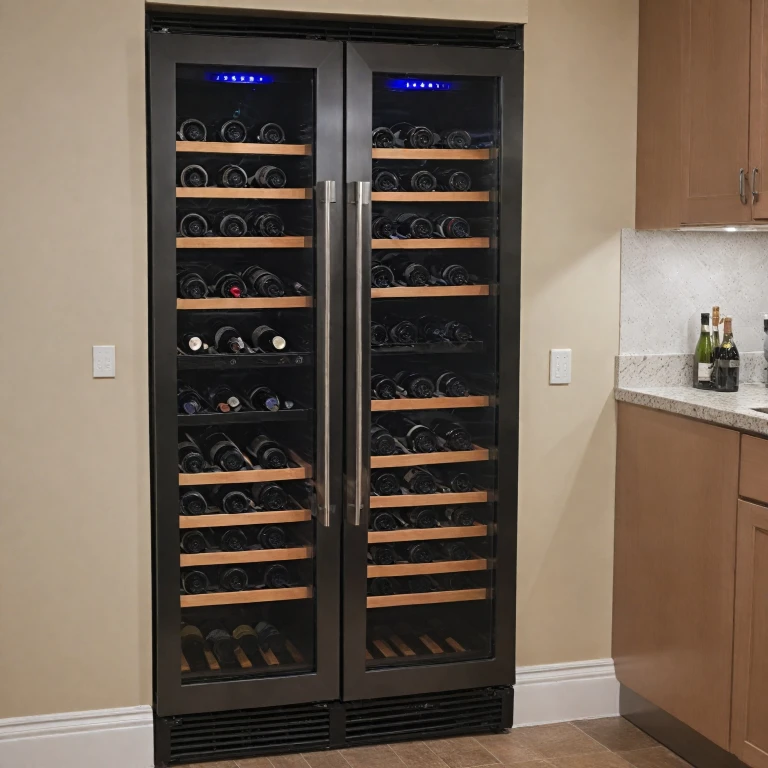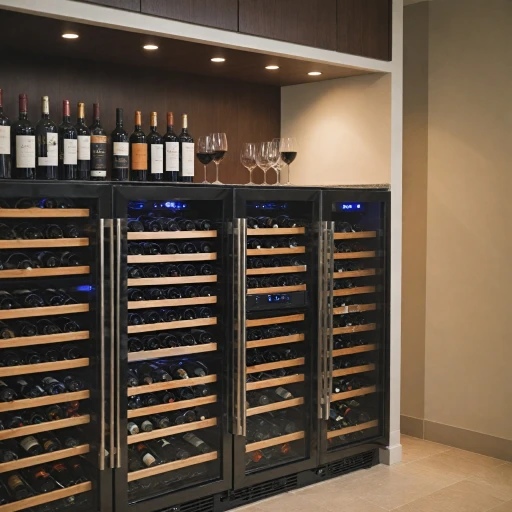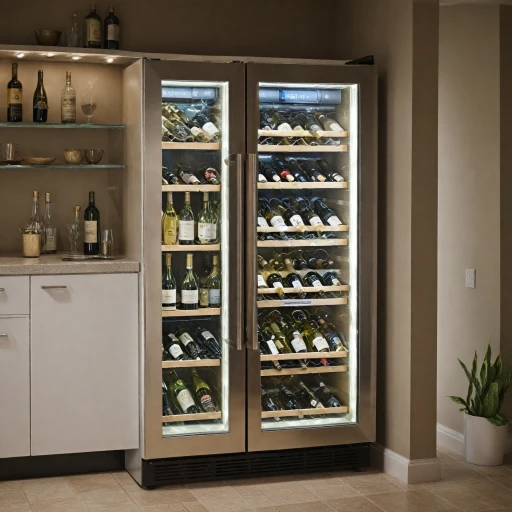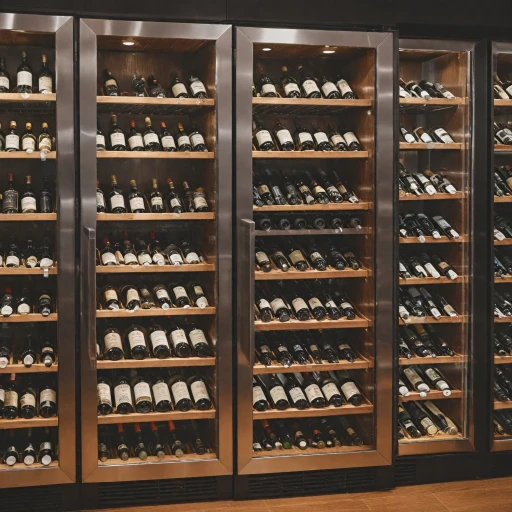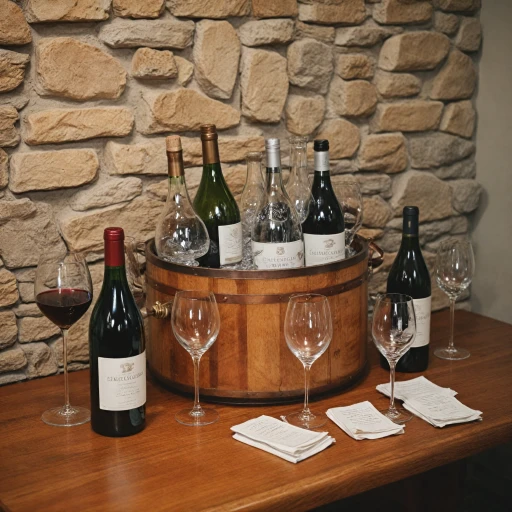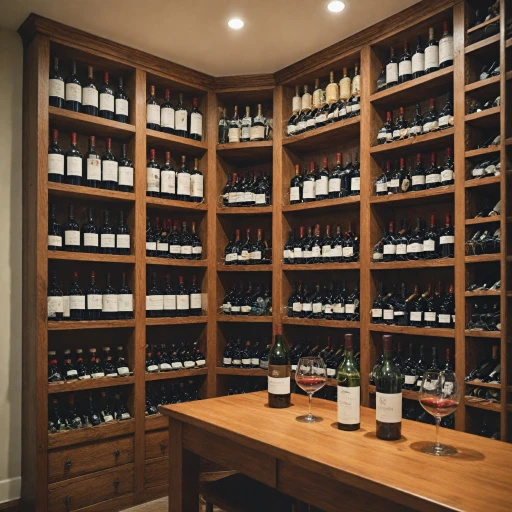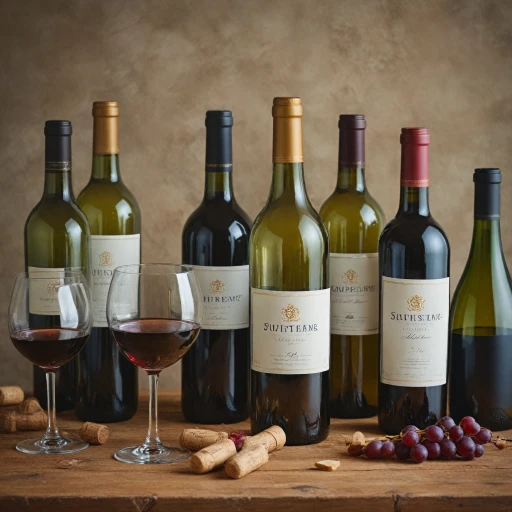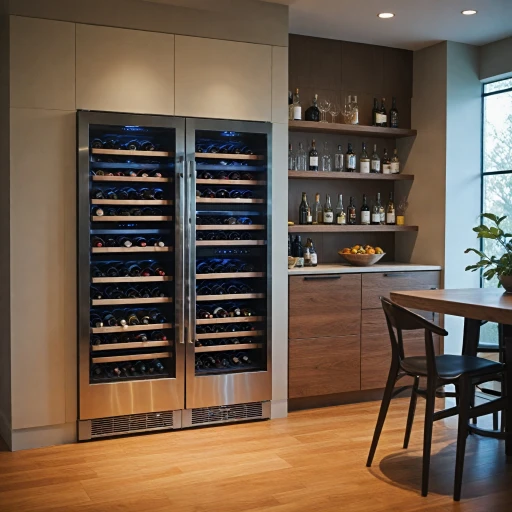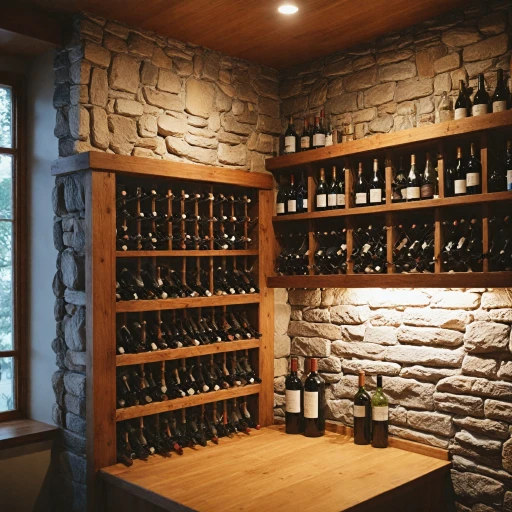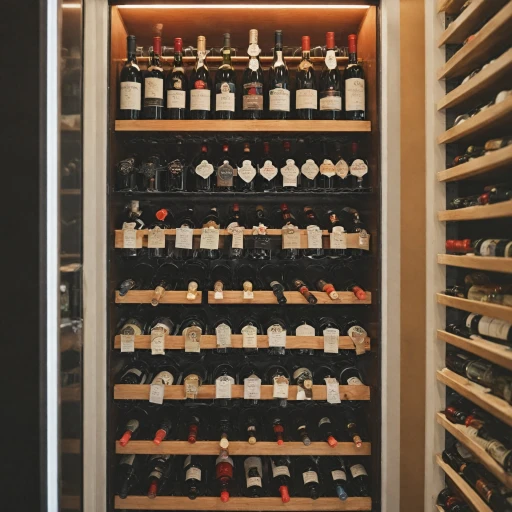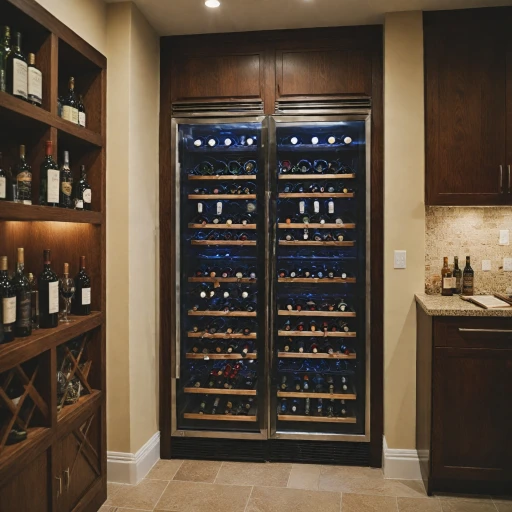
Understanding Red Wine Storage Needs
The Importance of Red Wine Storage
Storing red wine properly is crucial to preserving its quality and enhancing its flavors. The way red wines are stored can significantly impact their taste profiles, particularly for full-bodied varieties. Unlike white or sparkling wines, red wines have specific temperature needs that help maintain their characteristic aromas and textures.
When red wine is stored at room temperature or in unsuitable conditions, it can lead to undesirable changes in flavor and spoilage. Therefore, understanding the optimal storage environment, including the correct temperature for both short-term and long-term preservation, will ensure that each bottle of red wine is enjoyed at its best.
It's important to consider dual zone wine fridges, which allow for the storage of red and white wines at their respective ideal temperatures. These fridges can maintain the required cooler temperature for reds without affecting the zone set for white wines. Utilizing a wine cooler or a designated wine fridge safeguards your collection against temperature fluctuations that can degrade wine quality.
Full-bodied red wines, like Bordeaux or Shiraz, particularly benefit from controlled temperatures that are typically cooler than the average room temperature, but warmer than what is best for white wine. Therefore, identifying the right wine storage setup is crucial to preserving the integrity of the wine, ensuring a delightful serving experience each time.
The Ideal Temperature Range for Red Wine
Unveiling the Perfect Chill for Red Wines
Red wines, with their complex flavors and aromas, deserve to be served at just the right temperature. Striking the optimal balance in your wine fridge helps in preserving their character and enhances the tasting experience. Let's delve into the ideal temperature range for storing and serving these elegant wines.
Firstly, it's important to understand that the serving temperature for red wines differs from their storage temperature. Typically, lighter reds such as Pinot Noir thrive when served slightly cooler, around 12°C to 14°C (54°F to 57°F), emphasizing their freshness and acidity. Conversely, full-bodied reds like Syrah or Cabernet Sauvignon are best enjoyed slightly warmed, between 16°C to 18°C (60°F to 65°F), which accentuates their rich flavors and aromas.
For long-term storage, however, wine fridges should maintain a steady temperature of around 12°C (approximately 55°F). This cooler temperature ensures the wine matures slowly, avoiding temperature fluctuations that could spoil the wine's character. Many modern wine fridges offer dual zone capabilities, allowing you to set separate compartments for both storage and serving, accommodating an array of red wines within the same cooler.
Your objective, when selecting the ideal temperature, should revolve around retaining the wine's intended balance. Adjust your temperature settings strategically—understand that wine stored in a dual zone cooler can seamlessly transition from storage to serving conditions.
For insights into how you can adjust your fridge settings for perfectly chilled white wine, head over to our guide. Optimizing your wine cooler's setting ensures every bottle brings out its fullest potential when served.
Adjusting Your Wine Refrigerator Settings
Fine-Tuning Your Wine Cooler for Optimal Results
To maximize the full flavor profile and aroma of your red wines, it’s crucial to adjust your wine fridge settings precisely. Begin by selecting the correct temperature range suitable for red wine storage, which typically falls between 55°F to 65°F. This keeps your reds in a stable and optimal environment, avoiding common storage mistakes.
If your unit is a dual zone wine cooler, you have an added advantage. Dual zone fridges allow you to store different types of wines at their respective ideal temperatures under distinct zones. Dedicate one zone for red wines, setting the temperature accordingly, while maintaining a cooler setting in the other zone for white and sparkling wines.
A helpful tip for those aiming to store wine longer is to allow your wine cooler to stabilize. Sudden changes in cooler temperature can impact the integrity of the wines stored inside. Thus, avoid frequent temperature adjustments and maintain a consistent setting instead. For enthusiasts wondering where to begin, utilizing a zone wine system can make all the difference in preserving the character of both full-bodied reds and lighter white wines.
Common Mistakes in Red Wine Storage
Frequent Errors in Maintaining Red Wine Environment
When it comes to storing your favorite red wines, mistakes in temperature management are quite common. Understanding the storage requirements of red wine is crucial to preserving its quality. Here are some widespread errors that can impact your wine storage:- Storing Wine at Room Temperature: One of the most common mistakes is storing red wines at room temperature. While some might believe that room temperature is adequate, it often fluctuates too much. Such variations can harm the delicate balance of a red wine, leading to a loss of flavor and aroma.
- Not Using a Wine Fridge: Utilizing a regular kitchen fridge for storing red wine is less than ideal. These fridges usually have cooler temperatures meant for perishables, not wine. The result is often a wine that loses its rich flavors before being served.
- Ignoring Dual Zone Options: For those who enjoy both red and white wines, a dual zone wine fridge optimizes the temperature for each type. Ignoring the benefits of a dual zone fridge can lead to improper storage conditions.
- Neglecting Temperature Consistency: Consistent temperature storage is essential for maintaining the quality of wine. Frequent fluctuations lead to expansion and contraction of the wine, affecting the flavor profile negatively.
- Close Proximity to Vibrations: Storing wines where there are constant vibrations, like near washing machines or other heavy appliances, can disturb the sediments in full-bodied wines, undermining the wine's overall taste.
The Impact of Temperature Fluctuations
The Consequences of Temperature Swings
Temperature fluctuations can significantly impact the quality of your red wine. When wine is stored in a fridge or cooler, maintaining a consistent temperature is crucial. Even minor changes can cause the wine to expand and contract, potentially damaging the cork and allowing air to seep into the bottle. This exposure to air can lead to oxidation, which might spoil the wine's flavor and aroma.
For red wines, which are often full bodied, the ideal storage temperature is slightly higher than that for white wines. However, both types of wines benefit from stability. A dual zone wine fridge can be an excellent investment for those who store both red and white wines, as it allows for separate temperature settings, ensuring each wine is stored at its best.
It's also important to consider the long term effects of improper storage. Wines that are stored at fluctuating temperatures may not age well, losing their intended character and complexity. This is particularly true for red wines that are meant to be stored for extended periods before being served.
To avoid these pitfalls, ensure your wine cooler or fridge is set to the appropriate temperature and check regularly for any signs of fluctuation. Consistency is key to preserving the quality and taste of your wine collection.
Choosing the Right Wine Refrigerator
Key Features When Choosing Your Wine Refrigerator
When selecting a wine refrigerator, the decision isn’t as straightforward as picking any regular fridge. Red and white wines have distinct storage needs, and understanding these nuances will make a significant difference in preservation and enjoyment.
- Temperature Zones: A dual zone wine fridge offers the flexibility to store both red and white wines at their optimal serving temperatures. This capability is crucial for those who enjoy the variety of both full-bodied reds and delicate white wines.
- Capacity and Size: Consider how long term you intend to store wine bottles. For collectors, a larger fridge ensures there’s always space as your collection grows. Smaller options are available for those focused on shorter term storage.
- Temperature Consistency: The term storage of wines requires stable temperatures to prevent damage. Look for a cooler that promises to minimize fluctuations. Consistency maintains the quality of both red and white wines.
- Humidity Control: Maintaining the right humidity is as important as having the right cooler temperature. This prevents corks from drying, preserving the full flavor and aroma of your wines.
- Design and Material: Glass doors are aesthetically pleasing but ensure they offer UV protection to shield your wines from harmful light. Sturdy racks and an overall robust build add to the durability and functionality of the fridge.
Choosing the best wine fridge isn't only about the immediate use but also about enhancing your overall wine experience over time. From the way your reds and whites are served to ensuring every bottle is stored perfectly, the right fridge will make a significant difference.
